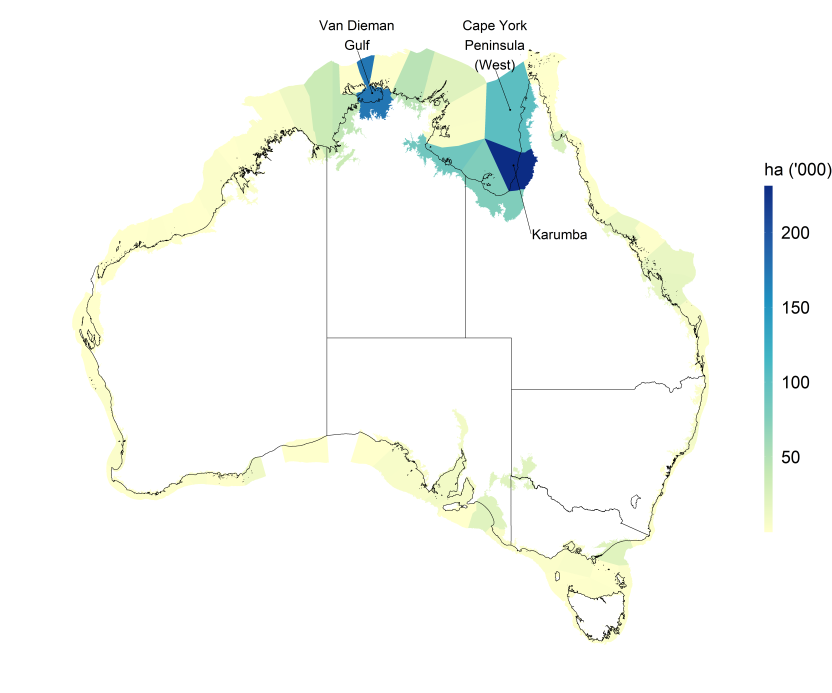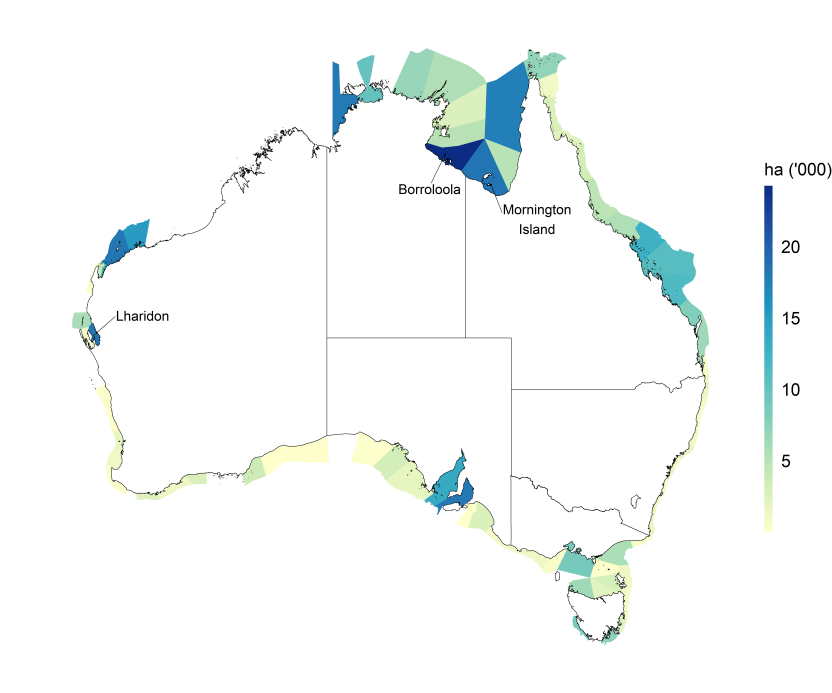Coastal protection services (mangroves and saltmarsh); dwellings protected, 2021
[["New South Wales","Victoria","Queensland","South Australia","Western Australia","Tasmania","Northern Territory","Australian Capital Territory"],[[14953],[22915],[58351],[15234],[10457],[18291],[9350],[0]],[[10064],[21172],[16057],[14352],[6546],[18291],[1659],[0]],[[5732],[6440],[52066],[6744],[5430],[0],[9189],[0]]]
[]
[{"axis_id":"0","tick_interval":"","axis_min":"","axis_max":"","axis_title":"","precision":-1,"axis_units":"","tooltip_units":"","table_units":"","data_unit_prefix":"","data_unit_suffix":"","reverse_axis":false}][{"value":"0","axis_id":"0","axis_title":"No. of dwellings protected","axis_units":"","tooltip_units":"(dwellings)","table_units":"(dwellings)","axis_min":null,"axis_max":null,"tick_interval":null,"precision":"0","data_unit_prefix":"","data_unit_suffix":"","reverse_axis":false}]
